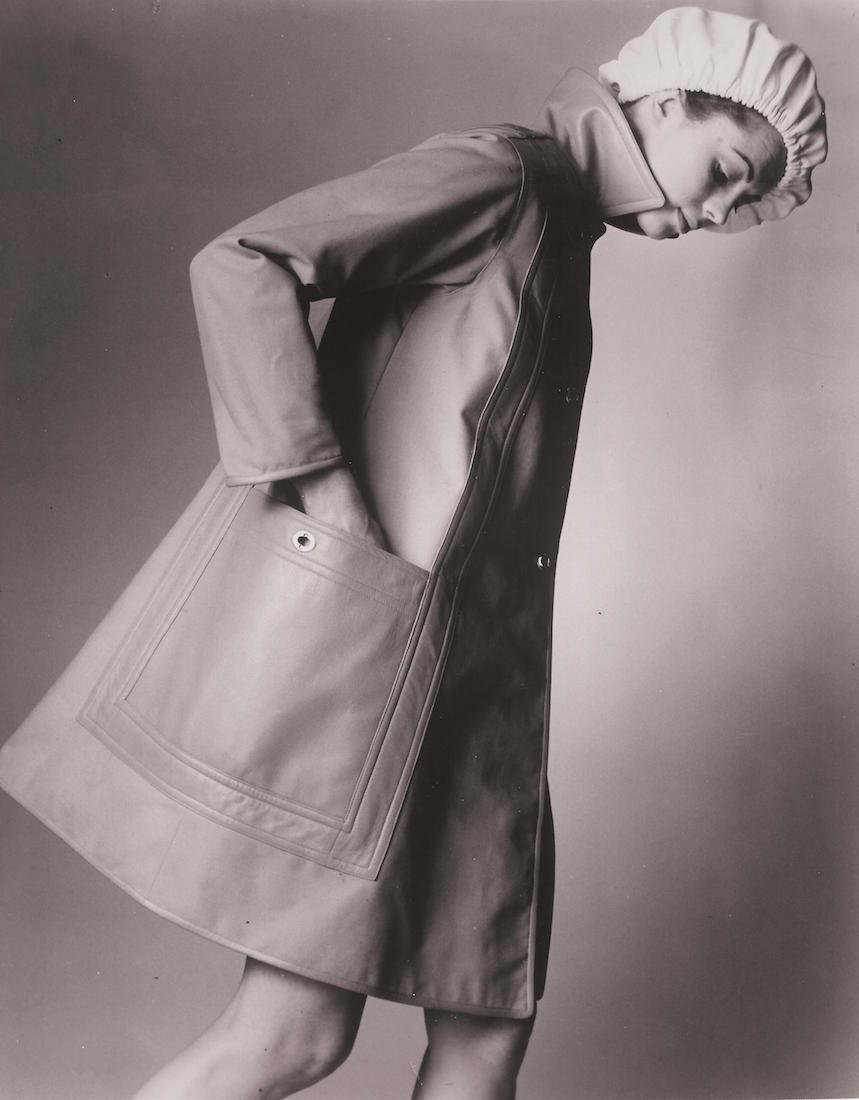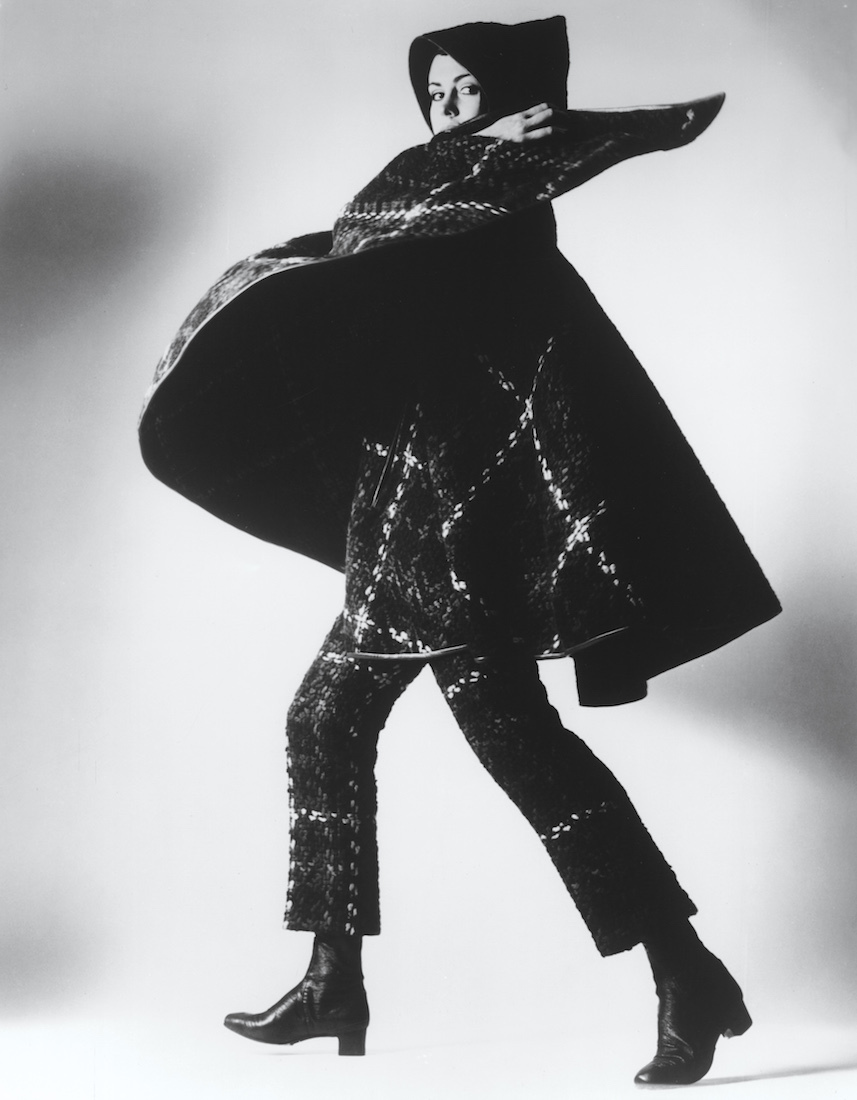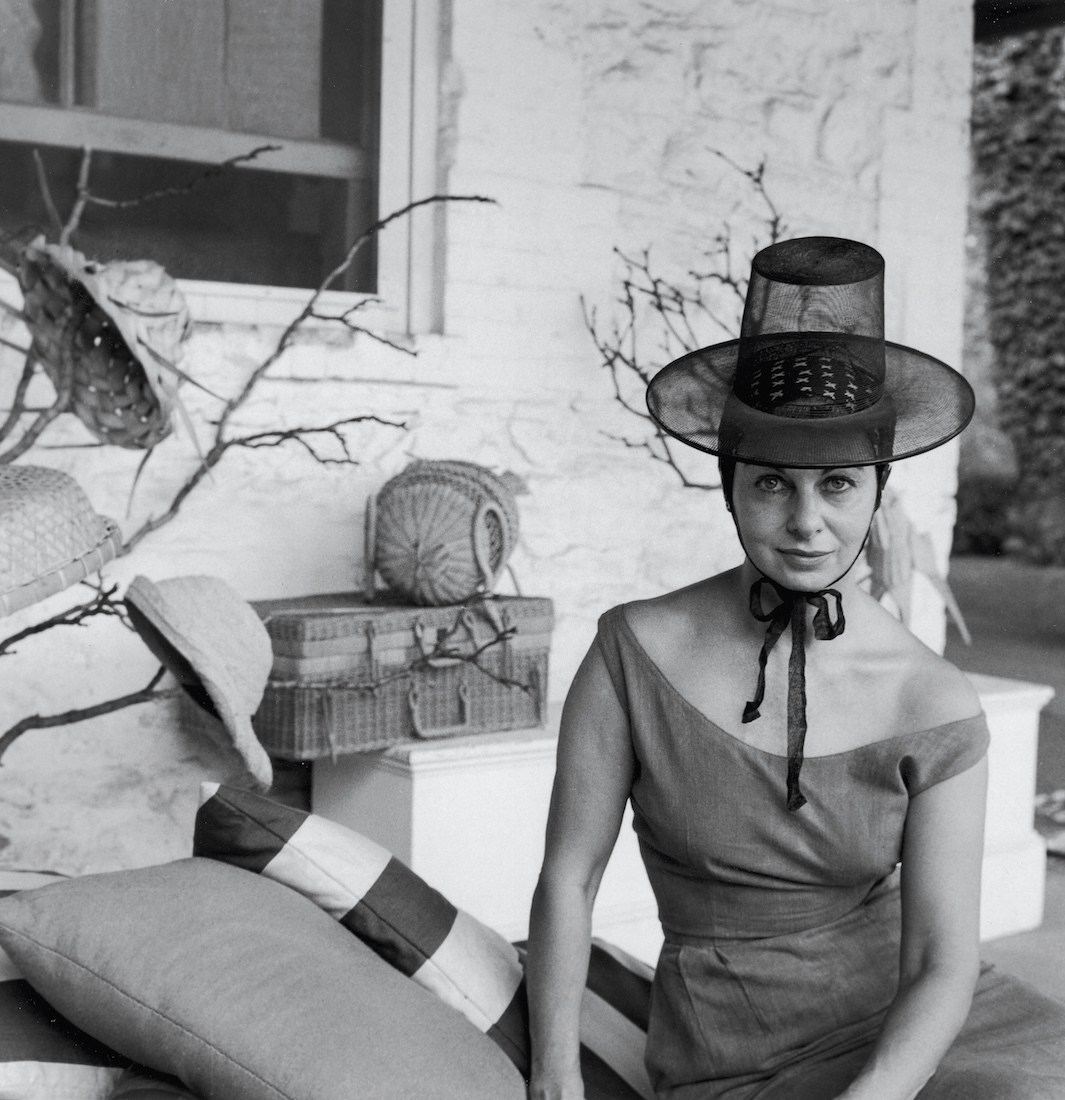When Phoebe Philo debuted her new vision for Céline in 2009, her return to fashion was met with unanimous and well-deserved praise. Celebrated for its minimalist and modernist leanings it was touted as a breath of fresh air to the fashion industry. What went unsaid in the reviews and ensuing coverage was that the collection, in its utilitarian chic and leather trimmed canvas, echoed the work of another designer, one almost forgotten within the annals of fashion: Bonnie Cashin.
Her influence has made it onto the runways of Tom Ford, Chloé, and even Nicolas Ghesquière’s Balenciaga, but her name is familiar only to costume historians and vintage enthusiasts. If you ran it by the average editor you’ll likely be met with a blank stare. Though many are unaware, Cashin was in fact a mega talent, a star designer who dressed Marlene Dietrich, who sold her clothes at Liberty in London and at Hermès in Paris, and won so many industry awards that she began using them as doorstops. Most historians will agree that Cashin is one of the most innovative designers America ever produced. And now Rizzoli has lifted her oeuvre out of obscurity with the first-ever book published on the designer, Bonnie Cashin: Chic Is Where You Find It.

Written by historian Stephanie Lake, it’s one of the most comprehensive accounts of any fashion designer’s work and life. Lake befriended the designer in her later years and when Cashin passed in 2000 was entrusted with her estate and her legacy. She spent the next 15 years sorting through the archive, digging through papers and contracts, and piecing together her story. “I worked with Bonnie nearly every day, she told me so many stories, and we became incredibly close,” Lake explains. “But I got to know Bonnie in a completely new way after she died.”
Chic Is Where You Find It is thorough to say the least, chronicling not only Cashin’s life and work but also her philosophical ideas about life and fashion, which in their time were rebellious and defied convention. Cashin was an individualist, working more like an industrial designer than a maker of high-end women’s clothing, prizing pragmatism and reality, an antidote to the decadent frivolity of the 50s during which she made her name.
Her innovations include the use of hardware on apparel: industrial zips, latches and turn locks cast in glistening brass. She sought inspiration from East Asia, adapting the region’s ancient and elegant costumes into modern solutions. From there she got the idea of layering — clothing that could adapt to different temperatures and occasions — revolutionary at a time when couturiers designed a change of clothes for nearly every hour of the day. Even her business practice was distinct. She maintained a laboratory through which she would produce prototypes and command a slew of design contracts. Instead of directly operating a manufacturing business, or licensing her name, she designed for specialty firms with her label sitting beside theirs. A partnership with Sills & Co. led to the creation of her trademark leather trimmed hem. She was even invited by Hermès to design sportswear (and make it with her own factories) but declined the offer when she learned her clothes were being sold at their store with her label removed. In the late 50s a handbag company called Gail Leather Products asked Cashin to design a completely new line for them. It debuted in 1962. It was called Coach.

Cashin designed Coach from 1962 to 1974. Her approach to handbags was as keen as her approach to clothes, reductively designing tools for “carrying things” instead of decoration or status. Crafted from her distinct modernist language and made to her exacting standards by a special team of craftsmen, Cashin’s pieces transmuted utility into luxury. Needless to say, Coach was a huge success.
Despite Cashin’s immense influence, her name faded throughout the years. “When you don’t license, and you retire and you don’t have anyone working under you who continues on, you begin to disappear,” says Lake. Certainly Cashin’s uncompromising conviction didn’t help. “Bonnie was opinionated, she was frank.” Lake divulges. “She was witty and amazing, but she was very open with what she didn’t like about the fashion system.” Cashin operated as an outsider and a choice quote from the designer reveals how she saw herself in context: “Fashion is now. Fashion is acceptance. Fashion is popularity. A large part of my work is anti-fashion. It is the future. It is conjecture. It has not yet been accepted.”
Bonnie Cashin: Chic Is Where You Find It is a rewarding and inspiring journey through the mind of one of fashion’s greatest inventors and iconoclasts. Filled with never-before-seen archival material it illuminates the poignancy and scope of a long neglected talent. But for Lake, telling Cashin’s story is not just about reclaiming a past, it also carries a potent message for our present: “to have a new idea, to be original, to innovate and change the course of your industry — to do something that is truly new — you can still do that today.”
Credits
Text Jeremy Lewis
Images courtesy Rizzoli
